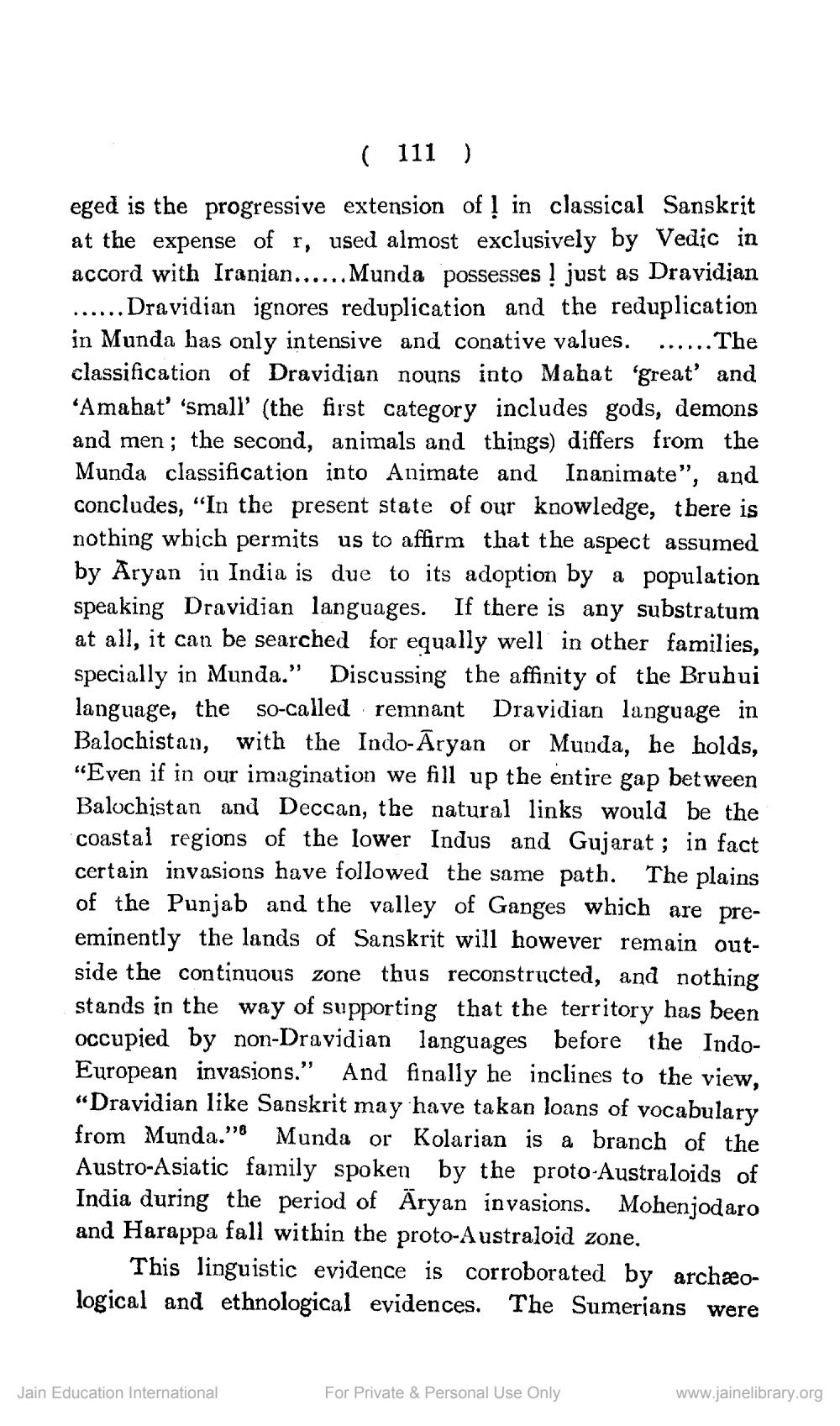________________
( 111 )
eged is the progressive extension of ļ in classical Sanskrit at the expense of r, used almost exclusively by Vedic in accord with Iranian......Munda possesses ! just as Dravidian ...... Dravidian ignores reduplication and the reduplication in Munda has only intensive and conative values. ... ... The classification of Dravidian nouns into Mahat (great' and ‘Amahat 'small' (the first category includes gods, demons and men; the second, animals and things) differs from the Munda classification into Animate and Inanimate", and concludes, “In the present state of our knowledge, there is nothing which permits us to affirm that the aspect assumed by Aryan in India is due to its adoption by a population speaking Dravidian languages. If there is any substratum at all, it can be searched for equally well in other families, specially in Munda.” Discussing the affinity of the Bruhui language, the so-called remnant Dravidian language in Balochistan, with the Indo-Aryan or Munda, he holds, “Even if in our imagination we fill up the entire gap between Balochistan and Deccan, the natural links would be the coastal regions of the lower Indus and Gujarat ; in fact certain invasions have followed the same path. The plains of the Punjab and the valley of Ganges which are preeminently the lands of Sanskrit will however remain outside the continuous zone thus reconstructed, and nothing stands in the way of supporting that the territory has been occupied by non-Dravidian languages before the IndoEuropean invasions." And finally he inclines to the view, “Dravidian like Sanskrit may have takan loans of vocabulary from Munda." Munda or Kolarian is a branch of the Austro-Asiatic family spoken by the proto-Australoids of India during the period of Aryan invasions Mohenjodaro and Harappa fall within the proto-Australoid zone.
This linguistic evidence is corroborated by archæological and ethnological evidences. The Sumerians were
Jain Education International
For Private & Personal Use Only
www.jainelibrary.org




